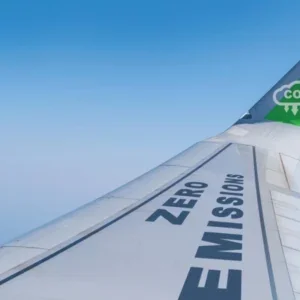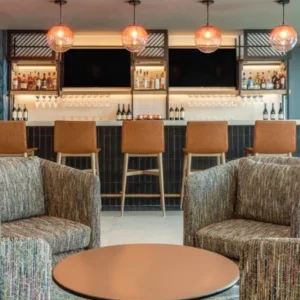Pressure to meet global expectations for the 2014 FIFA World Cup and 2016 Olympics has prompted Brazil to turn five of its largest airports over to private management in recent years, via concession.
Now, with more than R20 billion ($7.7 billion) in mandated infrastructure investments completed prior to the World Cup or still to come, airport operators say they’re starting to reap returns through passenger traffic growth and new route contracts.
Investment lures airlines
Around R11.3 billion ($4.3 billion) in investments has been made or will be in the coming years at Brazil’s first four airports placed under concession in 2012, which include São Paulo-Guarulhos International and nearby Viracopos-Campinas International, Brasilia International and a new airport in Natal, Rio Grande do Norte.
Another R11.4 billion ($4.4 billion) will come from the latest concession winners – Belo Horizonte-Confins and Rio de Janeiro’s Galeão – which were auctioned off in 2013 and transitioned over to private management in 2014.
Altogether, this should increase the annual capacity of those airports by 100 million passengers over the next decade, with expansion of 50% or more expected for runways and aprons. The number of Brazilians flying a year will grow from 110 million today to 200 million by 2020, according to the Brazilian Association of Airline Companies.
Major airlines said in 2014 that airport infrastructure is becoming a greater factor in the decision-making process around where to invest in future routes. Air France-KLM, for instance, which has 43 weekly flights between Europe and Brazil, wants to bring its new Airbus A380 to the Brazilian market, and local executives expect the first airport between Belo Horizonte-Confins and Rio-Galeão to deliver on expansion plans that will enable it to receive the aircraft.
At Guarulhos, since operator GRU Airport took over in 2013 and delivered its new Terminal 3 in time for the 2014 World Cup, direct international flights have been added to six new cities – Abu Dhabi,United Arab Emirates; Adis Abeba, Ethiopia; Casablanca, Morocco; Charlotte, US; Havana, Cuba; and Quito, Ecuador.
The leap forward in new infrastructure at Viracopos, for example, has facilitated a rapid evolution of that airport in the past year as an international gateway alternative to Guarulhos for the greater São Paulo region.
Goods and services
Already the largest airport in Latin America for cargo imports, with an average of 900t a day, Viracopos International Airport, located 93km north-west of São Paulo, stands to gain the most from expansion limits at Guarulhos, with the surrounding virgin land available to become South America’s largest airport before its 30-year concession contract expires.
Planned expansion has gone slower than initially forecast. Incomplete and opened more than five months late, the new passenger terminal at Viracopos received its first passengers in mid-October, and will boast an annual passenger capacity of 14 million.
The airport’s private manager, Aeroportos Brasil Viracopos, breached the terms of its concession contract that stipulated delivery of the new terminal in May 2014, prior to kick-off at the FIFA World Cup. The company is at risk of being fined up to R170 million ($65.8 million), as well as R1.7 million ($658,000) a day beyond the deadline, according to Brazil’s National Civil Aviation Agency (Anac).
In all, the new terminal will feature three piers, with 28 total boarding bridges and seven remote locations for aircraft. Viracopos will have the capacity to receive 25 million passengers a year, with ability to support increased demand through 2026.
Compared with other expansion projects completed in recent years, such as those in Las Vegas, US; London (Heathrow Terminal 3) in the UK; and Shenzhen, China, Aeroportos Brasil Viracopos was tasked with delivering a terminal of similar size in two years instead of the standard four, says company president Luiz Alberto Küster.
"There’s no airport terminal in the world for 25 million passengers that started from scratch and was ready in two years," Küster says. "We really have accomplished a revolution here in Viracopos."
The operator was tasked with delivering a new passenger terminal, new aircraft apron and taxiways, a 4,000-vehicle parking garage and doubling the width of an airport access roadway by the May 2014 deadline (apron and taxiways were ready on time).
Construction on the first phase of Viracopos’ expansion has continued through December, and flight transfers from the airport’s old terminal to its new one will come at a gradual pace through March 2015. The new terminal’s initial service in October focused on fewer than ten domestic routes for Azul Linhas Aéreas, followed by up to 38 international flights a week, which began operations in December.
Looking forward, Viracopos is uniquely situated to reap the greatest long-term return on industrial growth in São Paulo state. Multinational companies including John Deere, Mercedes-Benz, Samsung and Toyota have established the Viracopos-Campinas area as a manufacturing hub, driving the region’s GDP to levels on a par with small European nations, Küster explains.
"Our studies have identified that of passengers in São Paulo state who travel internationally, 60% are from the Campinas region," he adds. "Our competitiveness is linked to our accessibility to the consumer demand of this region. What we didn’t expect was how our ticket sales have attracted people from neighbouring states as well."
Viracopos’ only international route prior to last year was the TAP service to Lisbon, but new routes were introduced in July 2014 by GOL to Miami and Orlando (with a stop in Santo Domingo). Routes began in December by Copa Airlines to Panama City, Azul Linhas Aéreas to Fort Lauderdale and Orlando, and American Airlines to Miami.
More routes to the US are now a target, with New York and Florida favoured due to their popularity with Brazilian vacationers. A greater priority may be a new service to Europe, where opportunities exist to capitalise on slot constraints at Guarulhos, according to Aluizo Margarido, Viracopos’ commercial director.
"Many of the companies serving the EU and Guarulhos are having trouble with connection times, but we have slots available for them that will facilitate their connections in Europe," Margarido says.
On the up
Ideally located at the nation’s centre, Brasilia International is being focused on by Consortium Inframerica as Brazil’s largest hub for domestic connections. It assumed the rank of second-busiest national airport in 2014 for overall passenger traffic, and third behind São Paulo-Guarulhos and Rio-Galeão for international passengers, growing at a monthly rate of 11.4% compared with 2013.
Since taking over management of Brasilia in December 2012, Inframerica has invested more than R1.2 billion ($464.5 million) to build a new terminal that now boasts 110,000m2 and 29 boarding points, in addition to expanded taxiways and apron space.
"Our growth in 2014 has been continuous; the new terminal has made us a domestic hub," explains Daniel Ketchibachian, commercial director at Inframerica. "Our focus now is to make Brasilia Airport recognised as well for its international destinations."
New international carriers drawn this year include Aerolineas Argentinas and Air France. Copa increased Panama frequencies to Brasilia in June 2014, Air France will boost weekly Paris frequencies from three to five in July 2015, GOL began flying once a week to Punta Cana in November 2014, and TAM will began service to Orlando in the third quarter of 2015, while also expanding frequencies to Miami.
As international airlines look at establishing more routes to Brazilian gateway cities, the domestic networks of airports take on more importance. Delta Airlines, which has 42 weekly flights between Brazil and the US, has shifted route development to focus more on Brasilia in recent years because that airport is a hub for GOL, in which Delta bought a minority stake in 2011.
"With the expansion of the airport and the new experience passengers are having, we can bring more routes and destinations to Brasilia. The reduction of the ICMS [tax] last year has also been an attraction for the airlines," says Ketchibachian, citing a tax on jet fuel that was cut by local government in 2013 from 25% to 12%.
Landing new business
RIOgaleão, concessionaire of the Tom Jobim International Airport (Galeão) in Rio de Janeiro, began a series of roadshow presentations in Europe and Asia in the second half of 2014 to attract new airlines. The operator – made up of controlling shareholders Odebrecht TransPort and Changi Airport Group – began assuming control of Rio de Janeiro’s largest airport from state-run manager Infraero in mid-2014.
Rio’s international airport has gradually lost domestic flights over the past decade, but now wants to attract more from Avianca Brasil, Azul, GOL and TAM, with the aim of drawing new international carriers once it can boast a greater range of domestic connections. Notable new routes added in 2014 included Mexico City in June (Aeromexico) and Toronto in December (Air Canada).
RIOgaleão also fast-tracked plans in 2014 to start building new hotels near the airport, after customer surveys showed airport lodging options were lacking. French hospitality group Accor won a bid in October among five international hotel operators, and will invest more than R100 million ($38.7 million) to build a 450-room complex split between its brands Novotel and Ibis Style.
Originally slated for 2021, the Accor complex should now be ready for 2017. The airport will also increase the size of its planned convention centre by 25%.
With the goal of being a flight hub not just for Brazil, but all of South America, RIOgaleão invested R450 million ($174.2 million) in 2014, with projects involving reconfiguration of the aircraft apron to create new aircraft parking positions. Other investments during the past year included parking lot renovations, repairs to the existing terminal’s roof and restrooms, and new restaurant openings.
In 2015, R1 billion ($387.1 million) in new investments are slated, and in 2016 another R300 million ($116.1 million). A new Terminal 2 yet to be built will have 26 boarding bridges, and an existing parking garage will be expanded by four new floors and 2,100 new spaces.






